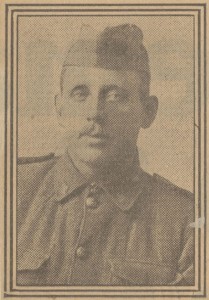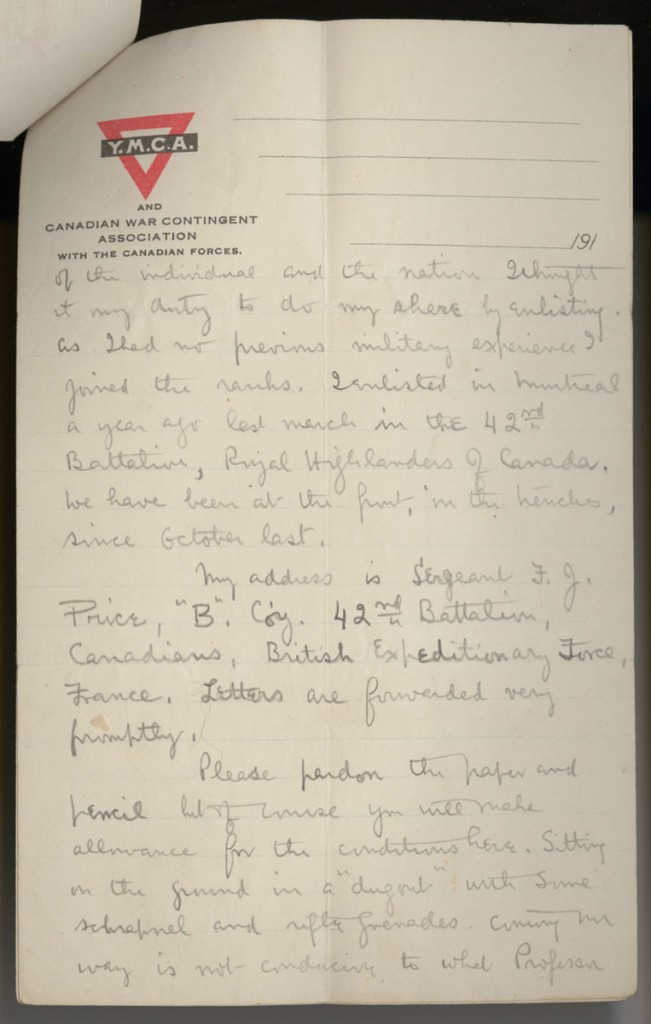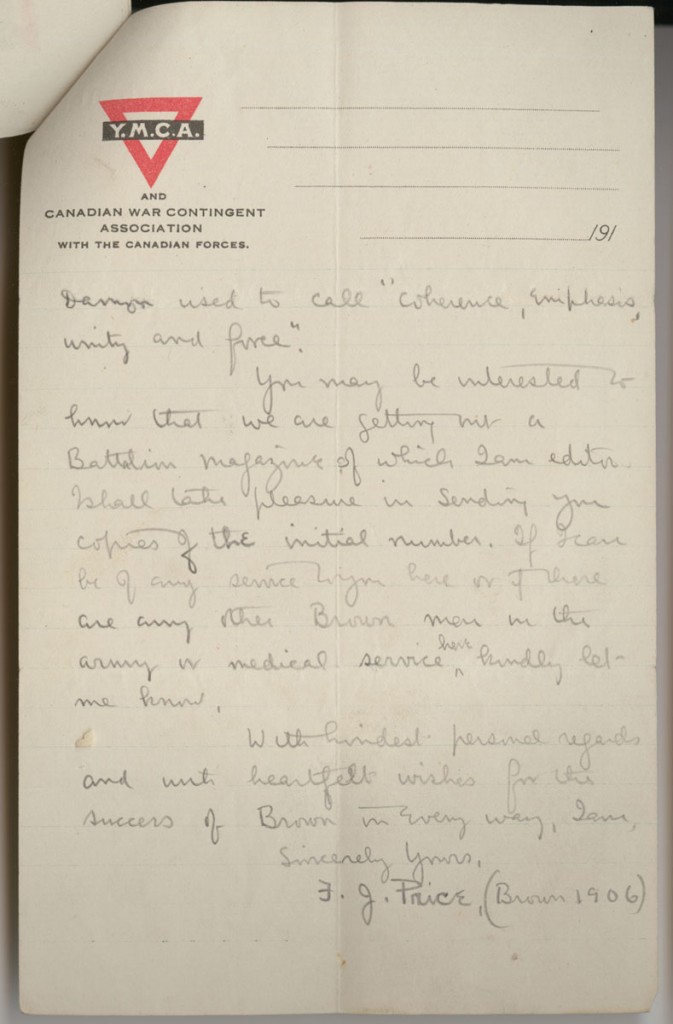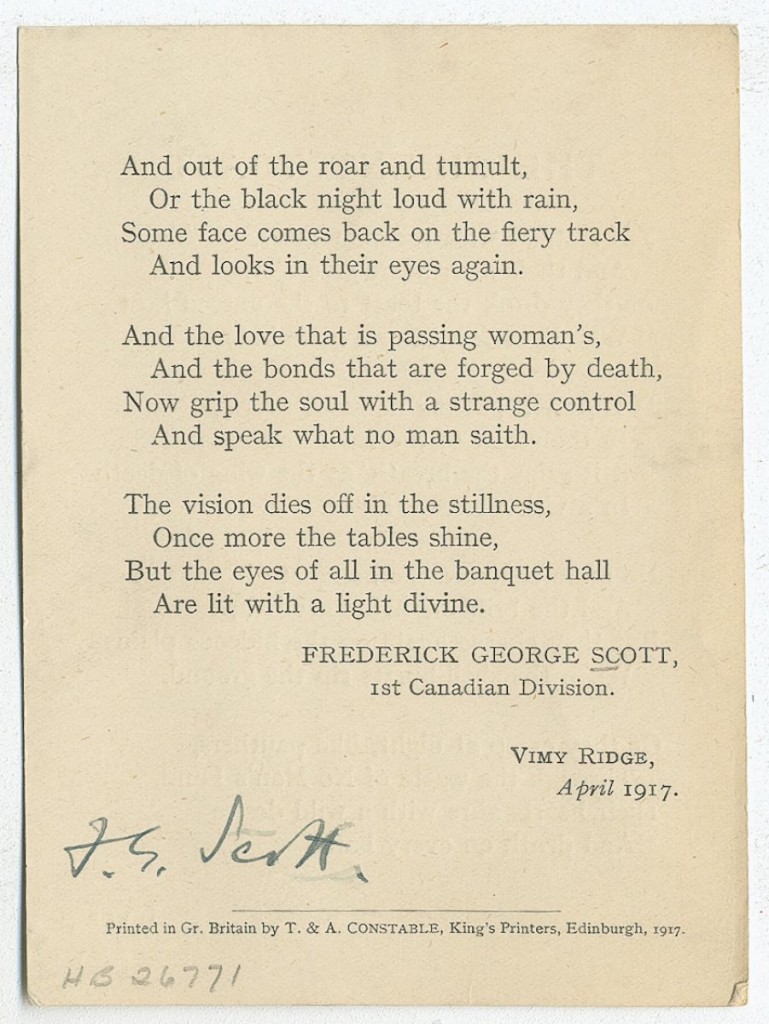Floss: A Brown Highlander
“I’M GOING TO GET A COMMISSION OR GET KNOCKED OUT.”
–Florence J. H. Price, 1916.11. BUA. Florence J. H. Price, Bio file
At Brown, Florence J. H. Price, 1906, or “Floss” as he was known, was an accomplished scholar, the president of his class, and a prolific athlete. He lettered in swimming, football and track; was captain of the swimming and water polo teams, and a lifeguard at Narragansett Pier. He was a member of Psi Upsilon fraternity, editor of the Mock Herald and Liber Brunensis. Around campus, Price was known for his phenomenal sense of humor and large, vivid vocabulary of “printable and unprintable epithets.”22. BUA. Liber Brunesis, 1906. pg124
Although Price studied at Brown, he had never become a naturalized citizen of the United States. He was born in Dublin, where his father was a Professor of Chemistry at Dublin University, and was quite young when the family moved to Canada. After his 1906 graduation from Brown with a degree in Philosophy, Price became a reporter for the New York Sun. When he decided to enlist in the Canadian Expeditionary Force, he was employed at the New York offices of B. F. Sturtevant Company.
In Montreal, on March 31st, 1915, Price joined the 42nd Overseas Battalion of the 5th Royal Highlanders of Canada, and sailed for France about a month later. Price was offered a commission upon joining, but he refused, saying he that he wanted to learn soldiering before becoming a leader, and that he “would rather win his soldier straps than have them given to him.”33. BUA, Florence J. H. Price. Bio file
In a letter to Brown University President, William H. P. Faunce, penned on May 16th, 1916 from “Somewhere in Belgium” Price explained why he joined the force. “Both on account of my parentage and because I believe Great Britain is fighting for Freedom both of the individual and the nation I thought it my duty to do my share by enlisting. As I had no previous military experience, I joined the ranks.” Price went on to ask Faunce’s pardon for the paper and pencil, explaining that “Sitting on the ground in a “dugout” with some shrapnel and rifle grenades coming my way is not conducive to what Professor Damon used to call “coherence, emphasis, unity and force.” Price ended the letter by informing Faunce that “We are getting a Battalion magazine of which I am editor. I shall take pleasure in sending you copies of the initial number. If I can be of any service to you here or if there are any other Brown men in the army or medical service here, kindly let me know.”
Two weeks later, on May 29th, Price was scheduled to be relieved from the front lines near Ypres. His double tour of duty was at an end, and he was due for a tour of rest. Instead, Price volunteered for the strafing trench, filling in for a fellow soldier who had taken ill. On the afternoon of Decoration Day, Price was in a dugout under a piece of corrugated iron, reading a magazine when he fell asleep.44. BUA. BAM 19:8, March, 1919. A high explosive shell burst over the dugout, Price was hit by a large piece of iron and was mortally wounded. He expired a short time after being hit.55. BUA. Florence J. H. Price, Bio File, Memo from Department of Militia and Defense to Lawyer at Brown Lieutenant Price was buried in the Menin Road Military Cemetery in Belgium.
Florence J. H. Price was the first graduate of Brown to die in the war. President Faunce received the letter Price wrote to him posthumously. Faunce remembered Price as “a man of fine physique, excellent mind, a wealth of Celtic emotions, just the man one would expect to volunteer and to show his daring up to the very end. There are tens of thousands of such cases, but this one comes near home.66. BUA. BAM, 1916 The month before, in London on his first furlough, Price was reported as saying “I’m going to get a commission or get knocked out. This fighting the Germans is the greatest game I ever played. Throwing bombs surely beats putting the shot.”77. BUA, Florence J. H. Price, Bio File The commission Price wished for would have come to him in June. He had been mentioned three times for exceeding gallantry under fire, and was scheduled to be decorated for valor by the king. The captain of Price’s company publicly hailed him as “the bravest man in the battalion.”88. BUA. OF-1E-3. World War I Files, box 9
In a letter to the secretary of the Class of 1906, Lieutenant Owen B. Jones recalled the night of March 26th, 1916, when he first met Price, on the front lines at apex of the Ypres salient, about one and half miles due east from the village of Zillebeke. “It was a meeting I shall long remember, for we were preparing to go across to No Man’s Land to the enemy’s lines. Price and myself and others of the party, five in number, had our faces and hands all blackened and were armed to the teeth with knobkerries, bombs, drench daggers, revolvers, wire cutters, and the rest of the paraphernalia. [ ]…I shall never forget Price’s white teeth gleaming through the smile of anticipation, in the dark. Jones’ recollections included Price’s extreme cool under nerve-wracking conditions, calling his knobkerry his “soothing stick,” and attributing his success at bomb throwing to his early training in throwing the discus at Brown University.99. BUA. BAM, 19:8. March, 1919. pp158-160
The Class of 1906 presented a large photo of Price to the Union, where it was hung beside the trophy case. The back of the photograph was inscribed with the following lines from a poem by Robert W. Service:
“His was the proudest part.
He died with the glory of faith in his eyes,
And the glory of love in his heart.
And though there’s never a grave to tell,
Nor a cross to mark his fall,
Thank God! We know that he “batted well”
In the last great Game of all.” 1010. BUA. BAM, 18:1. June, 1917. pp2-3
In 1917, the third of three ambulances that Brown University donated to France was named in Price’s honor. In 1931, the class of 1906 memorialized Price once again. After the class donated funds to the University for the purchase of eighty acres of land in Smithfield for an Outing Reservation, a log cabin was constructed and furnished for overnight use. A bronze plaque over the fireplace in the main room of the lodge read:
“Dedicated to the memory of the first President of the Class, Florence J. H. Price. Killed in Action at Vimy Ridge, May 30, 1916″
The inscription included an except from a poem by Eliot G. Parkhurst. Additional poems written by Colonel G. A. Taylor, U.S.A. Retired, in honor of Price, “On the Firing Line”, “Narragansett”, and “To a Brown Highlander” are found in Price’s biographical file. Mourning or memorial poetry, like that written by Colonel Taylor, Service, and Parkhurst were part of a larger social practice of processing the many deaths and losses of the Great War. Many examples of World War I mourning poetry can be found in Brown’s Harris Broadsides Collection.
Related Materials in the BDR:
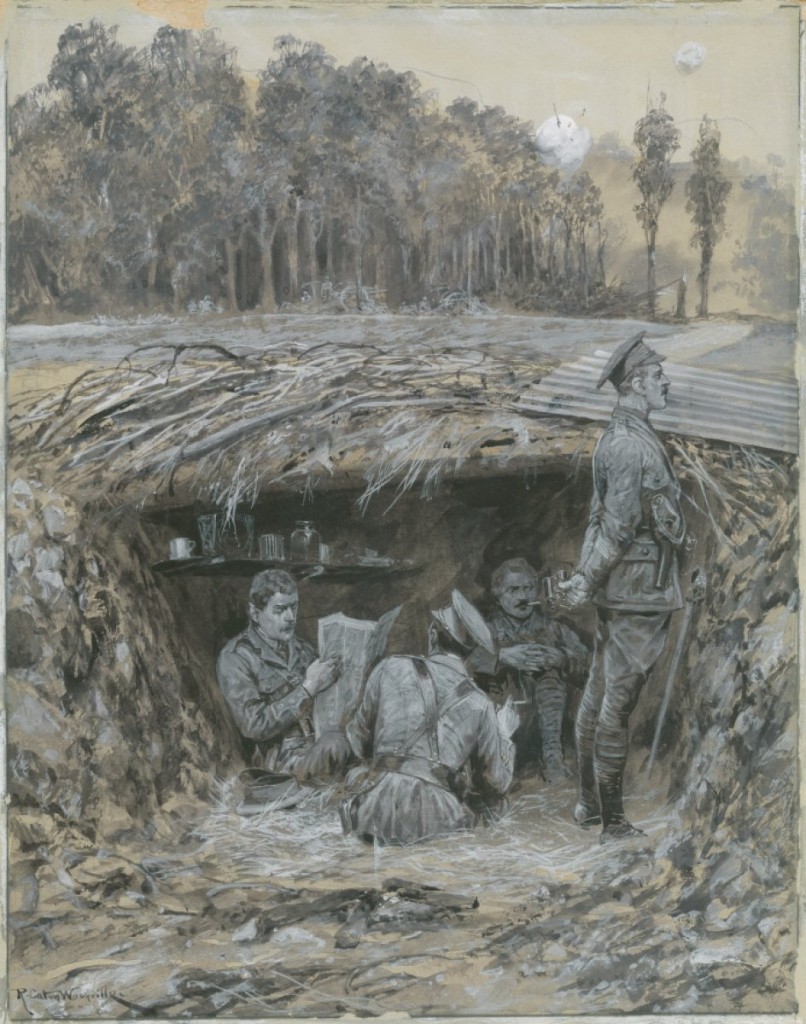
Places mentioned in this story: Dublin, Ireland; Montreal, Canada; Providence, Rhode Island; Narragansett, Rhode Island; New York, New York; Ypres, Belgium; Menin Road South Military Cemetery, Belgium; Zillebeke, Belgium, Smithfield, Rhode Island.
- BUA. Florence J. H. Price, Bio file
- BUA. Liber Brunesis, 1906. pg124
- BUA, Florence J. H. Price. Bio file
- BUA. BAM 19:8, March, 1919.
- BUA. Florence J. H. Price, Bio File, Memo from Department of Militia and Defense to Lawyer at Brown
- BUA. BAM, 1916
- BUA, Florence J. H. Price, Bio File
- BUA. OF-1E-3. World War I Files, box 9
- BUA. BAM, 19:8. March, 1919. pp158-160
- BUA. BAM, 18:1. June, 1917. pp2-3


